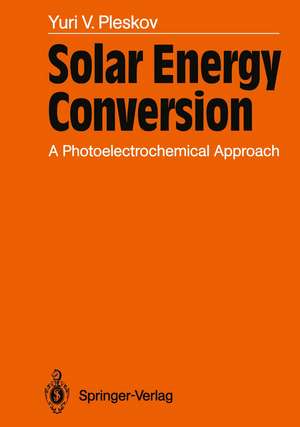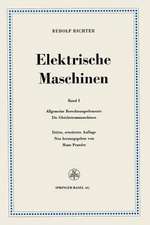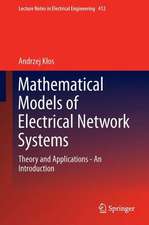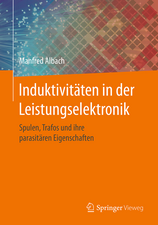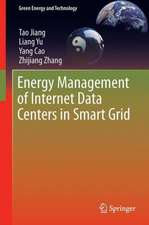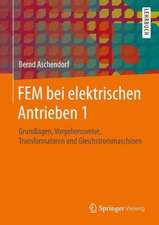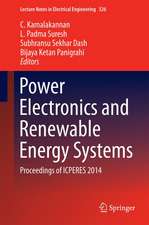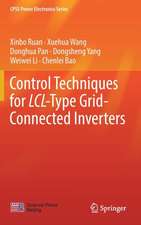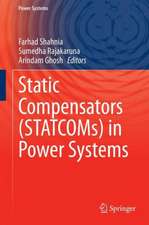Solar Energy Conversion: A Photoelectrochemical Approach
Autor Yuri V. Pleskov Traducere de Prem K. Dangen Limba Engleză Paperback – 22 noi 2011
Preț: 382.75 lei
Nou
Puncte Express: 574
Preț estimativ în valută:
73.25€ • 76.19$ • 60.47£
73.25€ • 76.19$ • 60.47£
Carte tipărită la comandă
Livrare economică 14-28 aprilie
Preluare comenzi: 021 569.72.76
Specificații
ISBN-13: 9783642749605
ISBN-10: 3642749607
Pagini: 176
Ilustrații: X, 163 p.
Dimensiuni: 170 x 242 x 9 mm
Greutate: 0.29 kg
Ediția:Softcover reprint of the original 1st ed. 1990
Editura: Springer Berlin, Heidelberg
Colecția Springer
Locul publicării:Berlin, Heidelberg, Germany
ISBN-10: 3642749607
Pagini: 176
Ilustrații: X, 163 p.
Dimensiuni: 170 x 242 x 9 mm
Greutate: 0.29 kg
Ediția:Softcover reprint of the original 1st ed. 1990
Editura: Springer Berlin, Heidelberg
Colecția Springer
Locul publicării:Berlin, Heidelberg, Germany
Public țintă
ResearchCuprins
1 Role of Solar Energy in the National Economy.- 2 Photoelectrochemistry as the Theoretical Basis of a Solar Energy Conversion Method.- 3 Stages of a Photoelectrochemical Process.- 4 Advantages of Semiconductor Photoelectrochemical Cells for Solar Energy Conversion.- 1 Fundamentals of Describing the Structure of the Semiconductor/Electrolyte Interface and its Photoelectrochemical Reactions.- 1.1 Aspects of the Physics of Semiconductors.- 1.2 Action of Light on Semiconductors.- 1.3 Energy and Electrochemical Potential Levels in the Electrolyte Solution.- 1.4 Structure of the Semiconductor/Electrolyte Solution Interface.- 1.5 Kinetics of Electrochemical Reactions on Semiconductor Electrodes.- 2 Processes Underlying the Action of Semiconductor Photoelectrochemical Cells.- 2.1 Fundamentals of Describing Photoelectrochemical Reactions on Semiconductor Electrodes.- 2.2 Photocorrosion and Protection of Semiconductor Electrodes.- 2.3 Types of Photoelectrochemical Reactions and Classification of Photoelectrochemical Cells.- 2.4 Characteristics of a Photoelectrochemical Cell.- 3 Solar Energy Conversion into Chemical Energy. Cells for Photoelectrolysis of Water.- 3.1 Basic Problems.- 3.2 Photoassisted Electrolysis of Water.- 3.3 Two-Quantum Photoelectrolysis of Water.- 3.4 Two-Stage Conversion of Solar Energy: Generation of Electrical Energy Followed by Electrolysis of Water.- 3.5 Oxide Photoanodes for Photoelectrolysis of Water.- 4 Solar Energy Conversion into Chemical Energy. Cells for Photoelectrolysis of Inorganic (other than Water) and Organic Substances.- 4.1 Photodecomposition of Hydrogen Halide Acids and other Inorganic Compounds.- 4.2 Photoelectrochemical Reactions of Organic Compounds.- 4.3 Photoelectrodes Made of Semiconductors with a Layered Crystal Lattice: Photointercalation and Photodeintercalation Processes.- 5 Solar Energy Conversion into Chemical Energy. Suspensions and Colloidal Systems.- 5.1 Mechanisms of Photoelectrochemical Processes in Microheterogeneous Systems.- 5.2 Microheterogeneous Systems: Fundamentals of their Preparation and Study Methods. Special Effects.- 5.3 Photosplitting of Water.- 5.4 Photodecomposition of H2S and Sulfides. Other Reactions Involving the Participation of Inorganic and Organic Compounds.- 6 Solar Energy Conversion into Electrical Energy. Regenerative Photoelectrochemical Cells.- 6.1 Basic Problems.- 6.2 Description of Particular Systems.- 6.3 Liquid-Junction Solar Cells for Storage of Energy.- 7 Protective Coatings for Semiconductor Electrodes.- 7.1 Coatings of Metals and Degenerated Semiconductors.- 7.2 Coatings of Electrically Conductive Polymers.- 7.3 Electrodes with Chemically Modified Surface.- Conclusion.- References.
